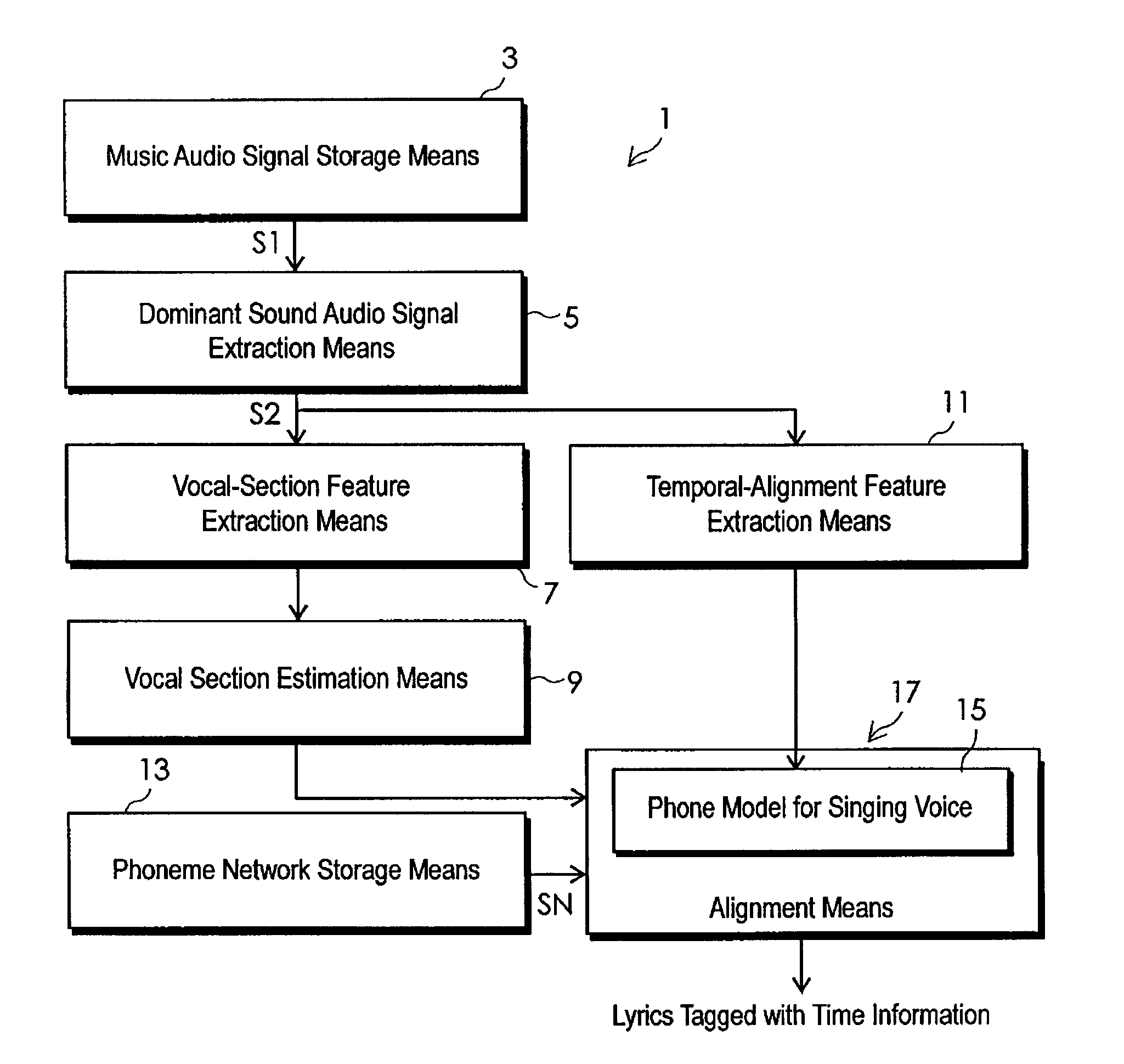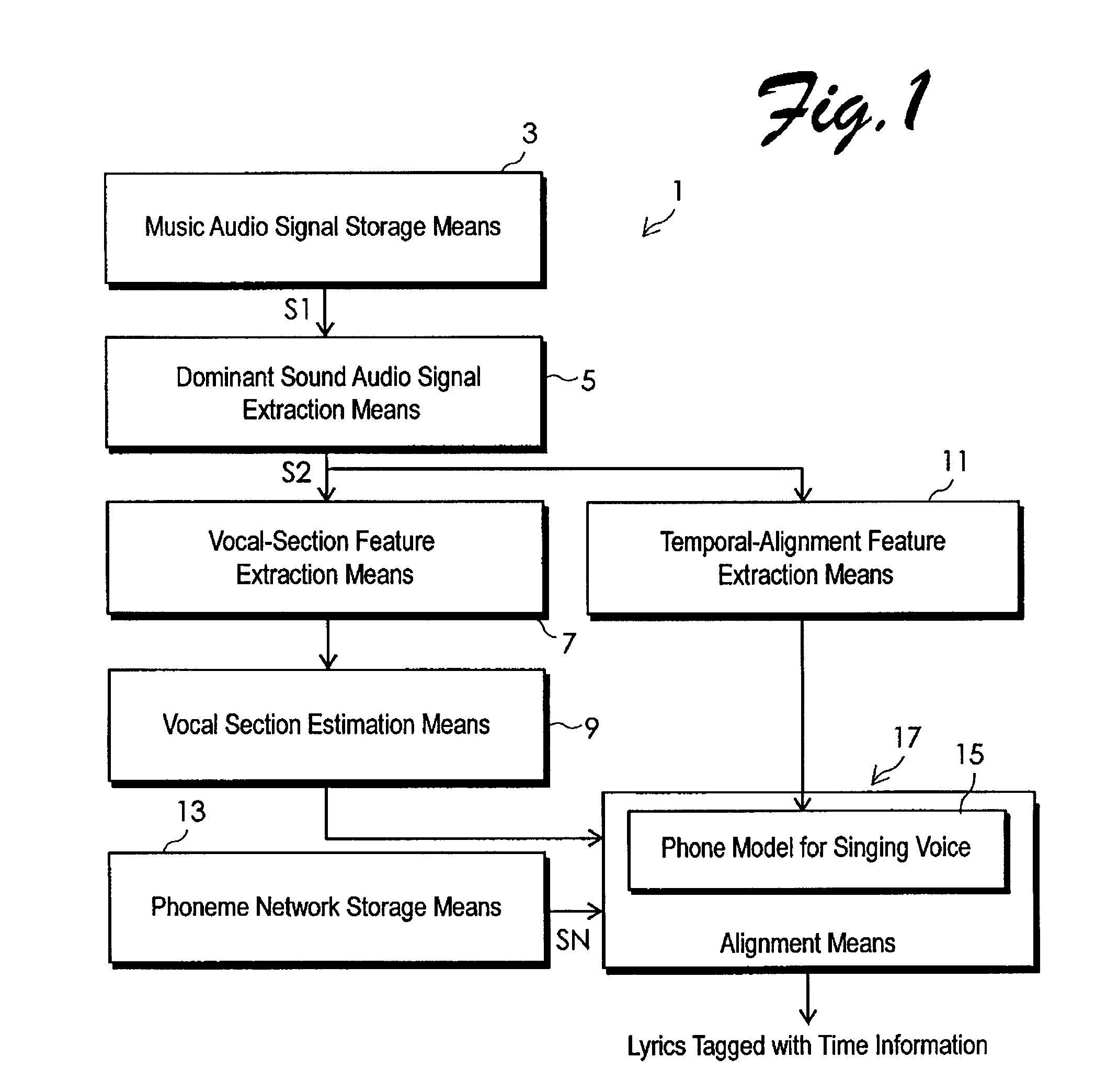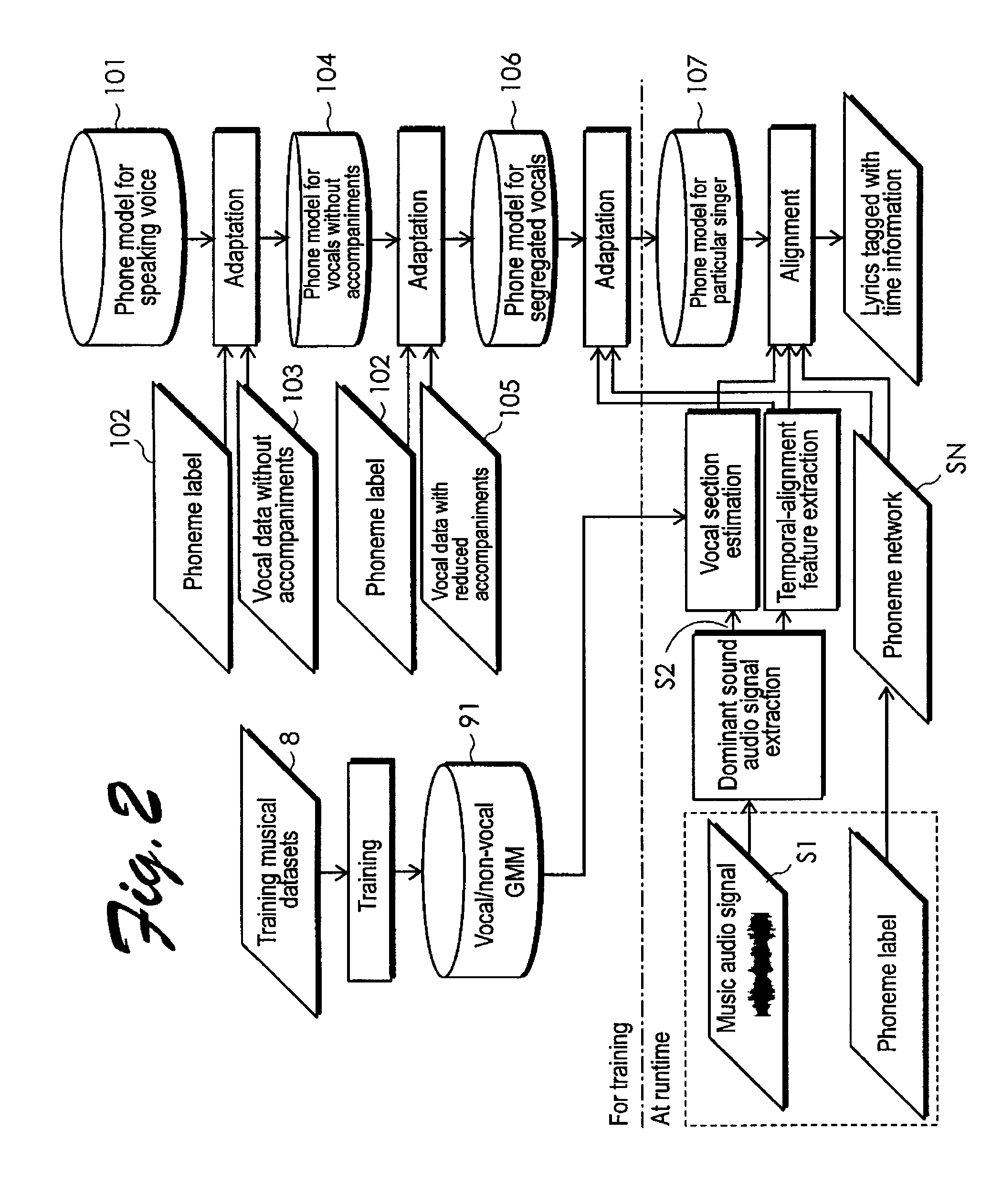Automatic system for temporal alignment of music audio signal with lyrics
- Summary
- Abstract
- Description
- Claims
- Application Information
AI Technical Summary
Benefits of technology
Problems solved by technology
Method used
Image
Examples
application example 1
Display of Lyrics Synchronized with Music Playback
[0162]The present invention is applied in displaying lyrics in synchronization with music. The inventors of the present invention have developed software for music digital data reproduction that changes the display colors of lyrics synchronized with music playback, based on the lyrics tagged with time information and have succeeded in changing the display colors of lyrics in synchronization with the music playback. It has been confirmed the accuracy of alignment as described above.
[0163]Lyrics were displayed on a screen and the display colors of the lyrics were changing in accompaniment with vocals. At a glance, this looked like so-called Karaoke equipment. However, phrase tracking was extremely accurate and musical appreciation was furthermore improved. The synchronization was automatically done by the computer program, not manually. This is quite different from the existing techniques.
application example 2
Music Cueing Based on Lyrics
[0164]According to the present invention, time information can be obtained in connection with lyrics. It is possible to program the music to be played back from a point corresponding to a clicked portion of the lyrics displayed on the screen. In other words, the lyrics are displayed on the screen; a portion of the lyrics is clicked; then, the music is played back from that point corresponding to the clicked portion of the lyrics.
[0165]The inventors have added this functionality to the software for music digital data reproduction, and have succeeded in starting the performance of the music from a point corresponding to the clicked portion of the lyrics. This functionality has not ever been implemented by existing techniques. It provides users with a new way of appreciating the music by actively selecting user's favorite portions of the music.
[0166]In the application examples mentioned above, the software for music digital data reproduction that the invento...
PUM
 Login to View More
Login to View More Abstract
Description
Claims
Application Information
 Login to View More
Login to View More - R&D
- Intellectual Property
- Life Sciences
- Materials
- Tech Scout
- Unparalleled Data Quality
- Higher Quality Content
- 60% Fewer Hallucinations
Browse by: Latest US Patents, China's latest patents, Technical Efficacy Thesaurus, Application Domain, Technology Topic, Popular Technical Reports.
© 2025 PatSnap. All rights reserved.Legal|Privacy policy|Modern Slavery Act Transparency Statement|Sitemap|About US| Contact US: help@patsnap.com



